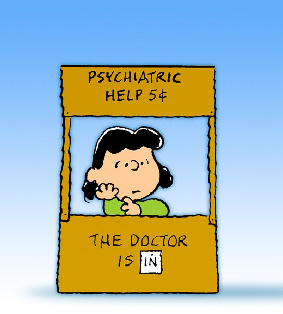I had read a week or so ago on Science-Based Medicine that PBS has been running what are essentially infomercials for quacks. SBM picked the story up from Salon. I thought my local PBS stations (one in West Virginia, one in Maryland) were immune. I was wrong.
I have a weight bench in the bedroom and I usually watch PBS while I lift. Of course, this is usually weekday evenings, not weekend mornings, so imagine my surprise when I turn on the TV and, instead of the gentle, soothing voice of Jim Lehrer, I see Dr. Mark Hyman peddling his UltraMind Solution.
I didn’t watch long because I read somewhere that it’s bad to vomit while weightlifting. But I wanted to touch on some of the stuff Hyman said. The first, that studies have shown that autism has been linked with diseases of the gut, had me in stitches. The problem is that those studies have been discredited, and considering that Wakefield did his study on a huge sample of 12 people, I don’t know how valid the results could be.
We now know that mercury is toxic.
Actually, we’ve known that mercury was poisonous since at least 1926. However, there are still commercial applications that need mercury, so we still have to use it and be cautious of its environmental effects. But don’t make it sound like mercury poisoning is a new concept.
We use special chemicals that bind with the mercury.
Chelation. He is talking about adults here, so I’m not going to go on a rant about chelating children. He is specifically talking about an adult who lived near a concrete plant. In this case chelation would be appropriate. However, Hyman makes it sound like everyone needs chelation. This is akin to comparing the effects of environmental radiation from someone who lived at Chernobyl to someone born and raised in Nebraska.
Stress shrinks the hippocampus.
This article from Harvard psychologist R.J. McNally refutes this mind myth, giving us a number of studies showing that the atrophy theory is bogus.
Stress lowers serotonin levels in your brain.
I have a problem here. While I can’t find anything reliable that directly relates high stress and low serotonin, it is logical. However, studies have shown that serotonin is released during exercise, and exercise is physically stressful.
But that’s not the real problem. The problem is: so what? People seem to think of serotonin as a miracle, cure-all neurotransmitter, like if they can just get more and more serotonin they would be fine (when, in fact, it makes people ill. It’s called serotonin storm). It’s the same irrational logic that steroid-users present after they’ve shrunk their testicles and grown bitch tits (thank you, Chuck Palahniuk, for such a wonderful term). There can truly be too much of a good thing.
We need stress. We thrive on it. Stop making stress out to be a demon. It is by facing stress that we change, and we face stress as we change. You can point to happiness as the key to a healthy life, but if you’re smiling and laughing in the middle of a firefight, there is something wrong with you.
I’m going to stop here before my head explodes from the stupid. I didn’t link to any of Hyman’s web sites (you’re welcome), but if you want to find this guy, just Google him.



 Posted by Danny McCaslin
Posted by Danny McCaslin 



